If you want to check the WordPress version of your website:
- Know whether you’re using the latest version or not.
- Check the version of your client’s website without asking.
- Solve a special issue associated with the version.
- Conduct penetration testing.
Checking your WordPress version is crucial for maintaining the security and stability of your website. WordPress releases regular updates that include bug fixes, performance improvements, and security patches.
By keeping your WordPress version up to date, you can protect your site from known vulnerabilities and ensure compatibility with themes and plugins.
Outdated versions are more susceptible to hacks and malware attacks. Regularly checking and updating your WordPress version is a simple but essential task for responsible website management.
Then I’ve got your back. In this article, I’ll use a demo website to show you every single step to find WordPress version of website. Without wasting your precious time, let’s get started.
TL;DR
Checking your WordPress version is vital for security, compatibility, and performance. You can find WordPress version of website through dashboard, source code, RSS, cPanel, FTP, or online tools like Sucuri. Keeping WordPress updated and hiding its version can protect your site from common vulnerabilities and hacker exploits.
1. At a Glance
First, you need to sign into your WordPress website, generally attained by writing /logging in at the end of your website name. It immediately prompts you to type your username and password.
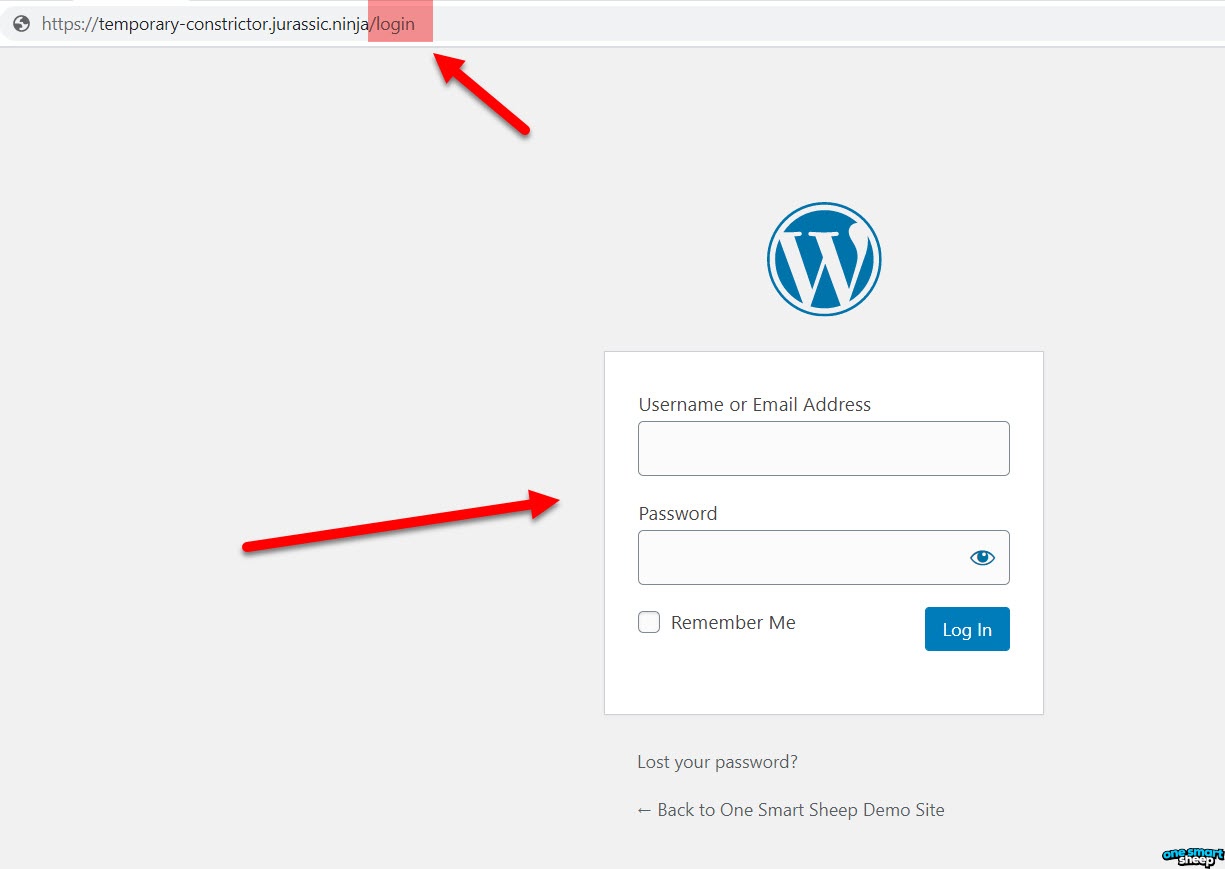
The first window that appears— when you’ve successfully signed in— is your Dashboard and Home, and in the At a glance window, you can see the WordPress version you're currently running.
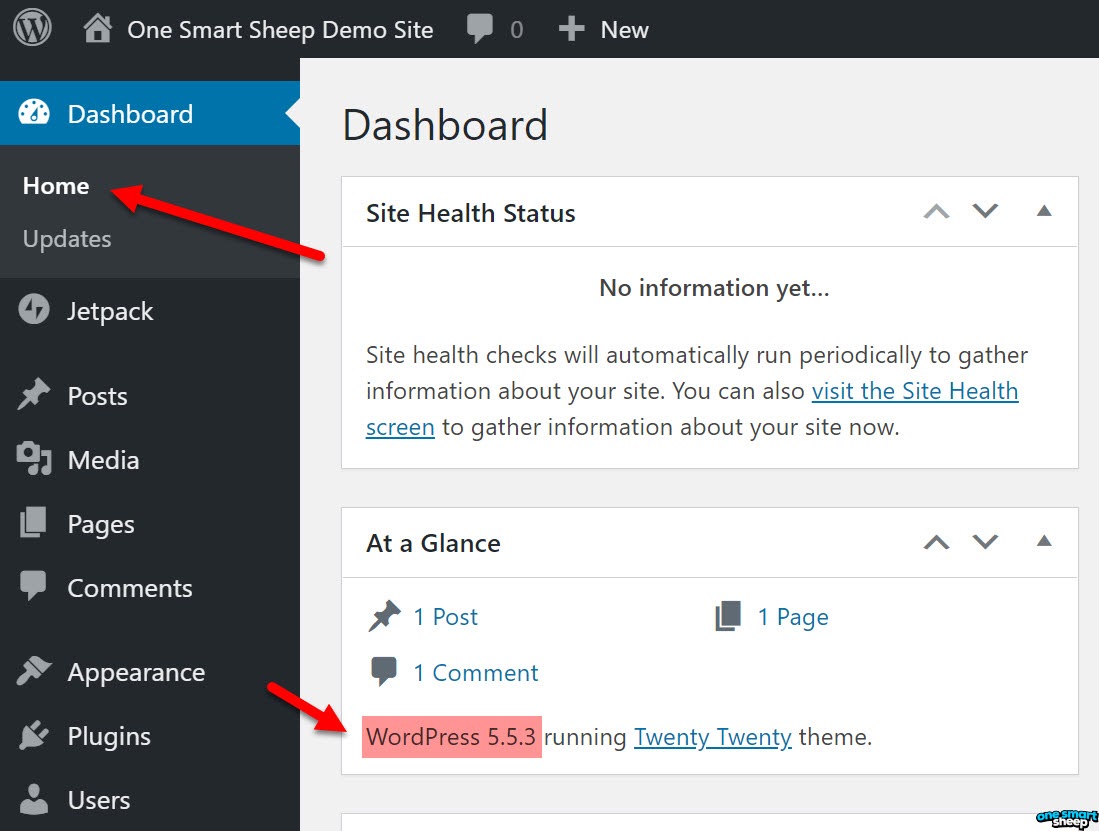
2. Bottom of Home
No matter where you are in your website's admin panel, the WordPress version is written at the bottom of the right corner of the screen. Another handy way to find WordPress version of website without navigating away.
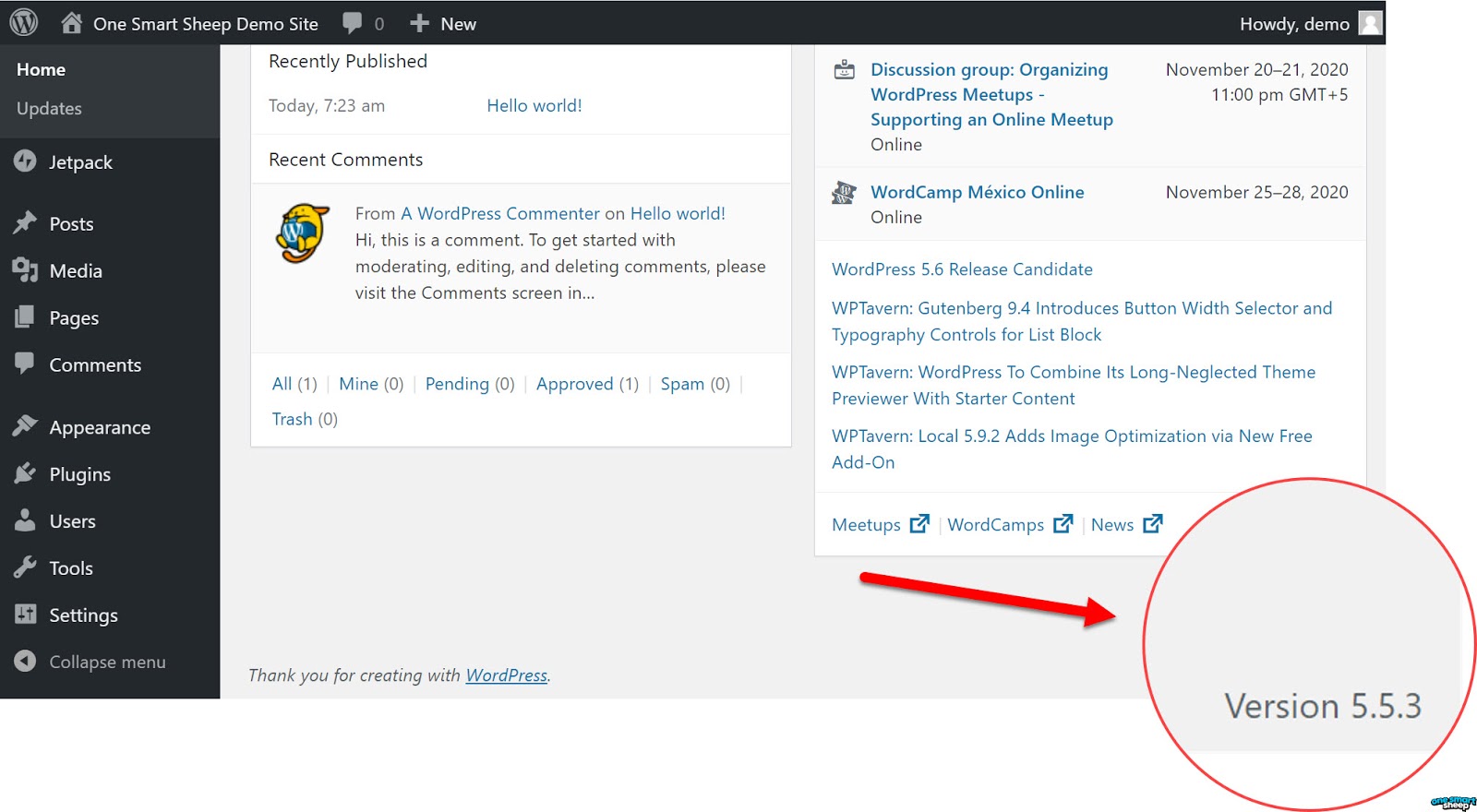
Note: It doesn't show the current version if you’re using an outdated version. Rather it forces you to get the latest version like this:

3. Updates Section
In the Updates section within the Dashboard, you don’t only come to know about your version, but also it helps you to check whether you’re using the latest version or not.
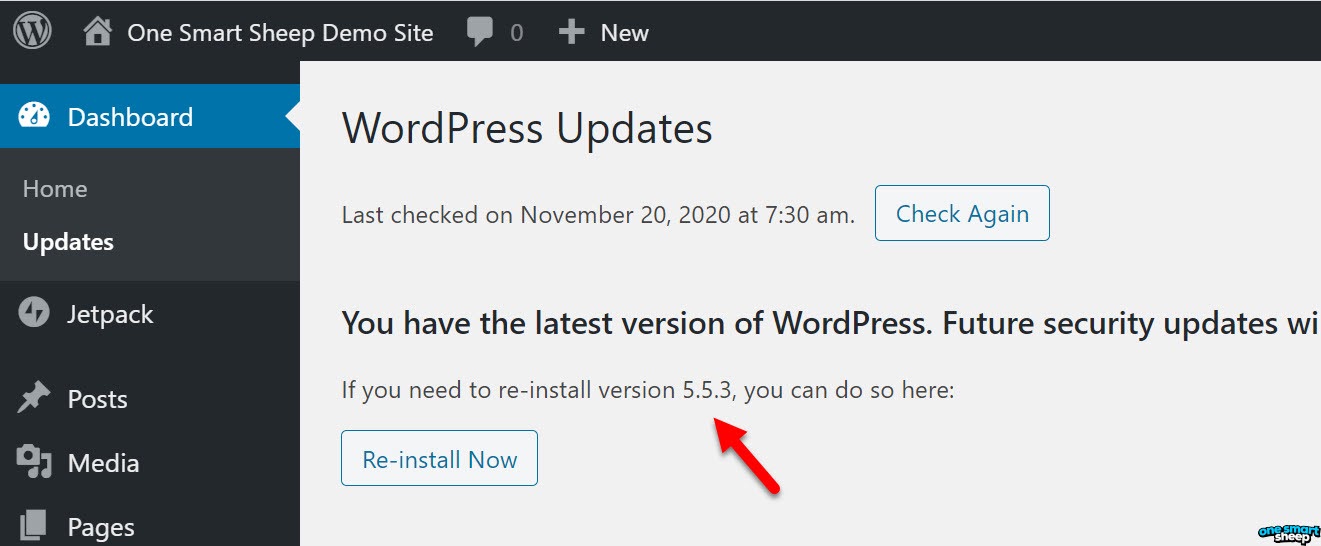
Note: Like Way 3, it might also not be the perfect method to check since it doesn’t show the version you use if you have an outdated version. It shows an updated version of WordPress is available.

4. Source Code of Any Website
This is the best way to find out the WordPress version on any website, especially when you don’t own a WordPress website. It’s also how hackers find WordPress version of website for exploiting known vulnerabilities.
How does it work? Right-click on any empty part of a website and click View Page Source.
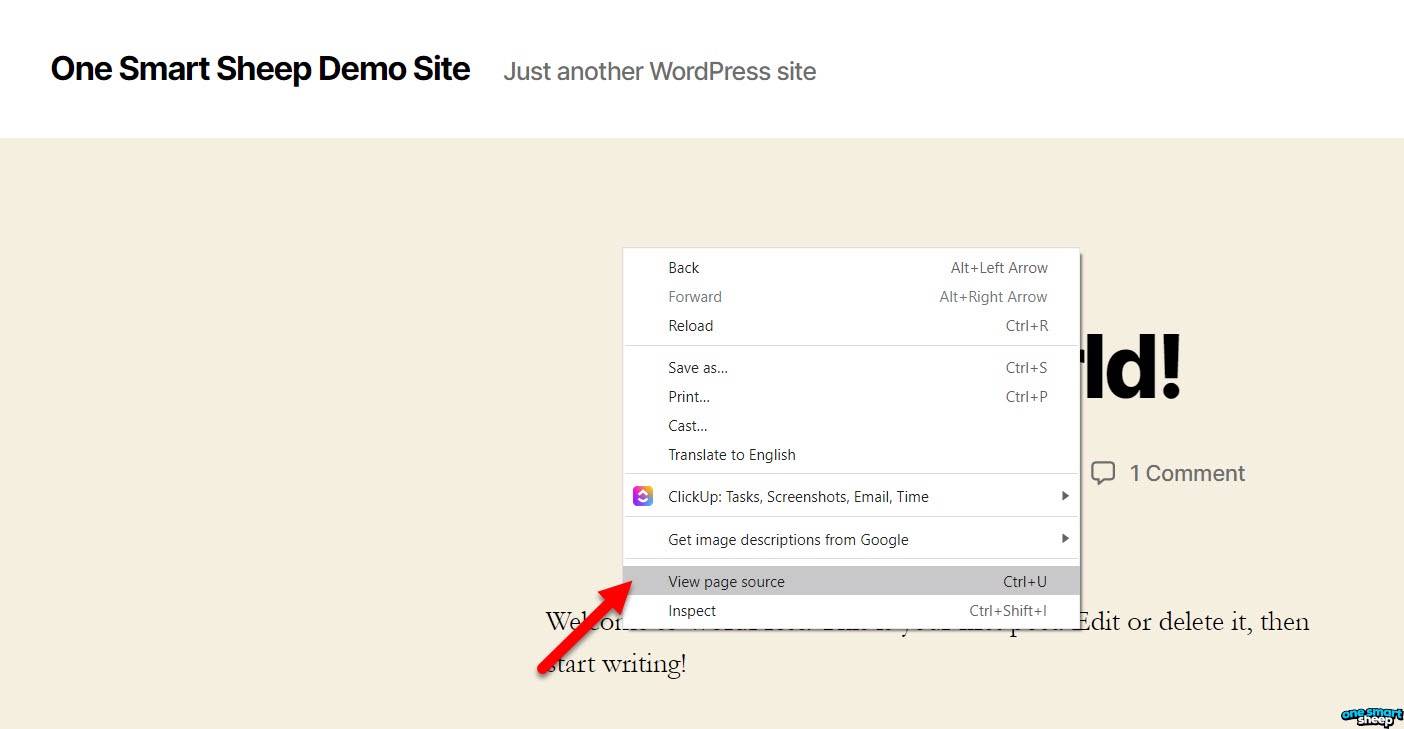
Anything after the ?ver= is actually the version of WordPress, commonly found in the CSS files. Make sure you look for inside the wp-includes or wp-admin. Otherwise, WordPress reveals the plugin version as well.

Note: Some websites might be using security plugins to hide their WordPress version in CSS and other scripts. I also mentioned the way to hide the versions in the hide WordPress version.
5. RSS Feed
WordPress automatically generates RSS for every new website. It's better to disable it since some people might use it to scrape your content and publish it elsewhere. What is RSS actually? RSS stands for "rich site summary." In its heart, RSS describes text documents with content, images, and video. Type /feed at the end of any website using WordPress. In the generator tag, you’ll find WordPress version of website if it's not hidden.
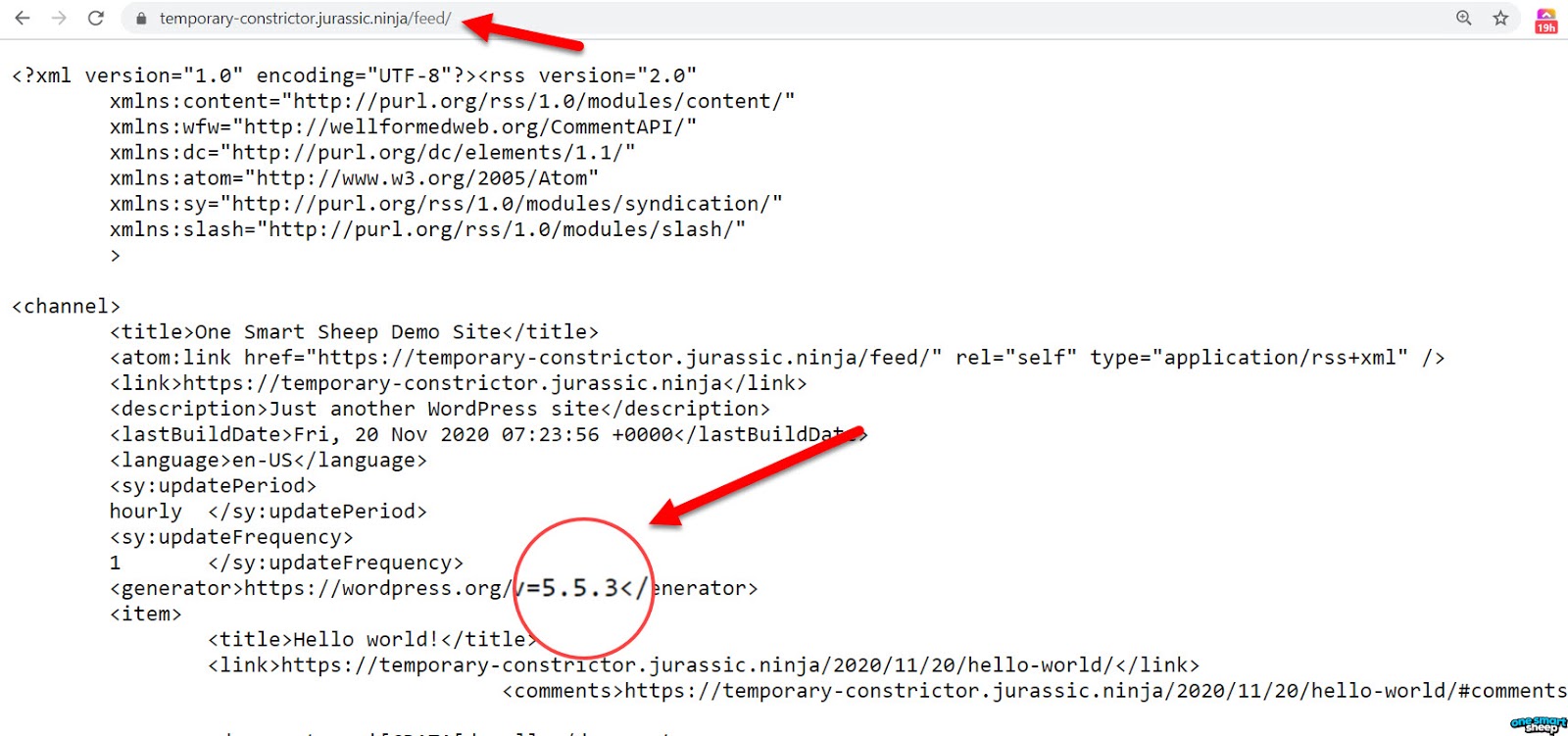
Note: You might not find the WordPress version in the RSS feed on some websites due to the code they have placed to hide it. How do they hide it? I have shown the way how you can hide the version easily. Scroll down to learn more.
6. cPanel
The majority of users use cPanel hosting due to its simplicity and affordability. Go to your cPanel and find out the WordPress icon found in 1 Click App Installer.
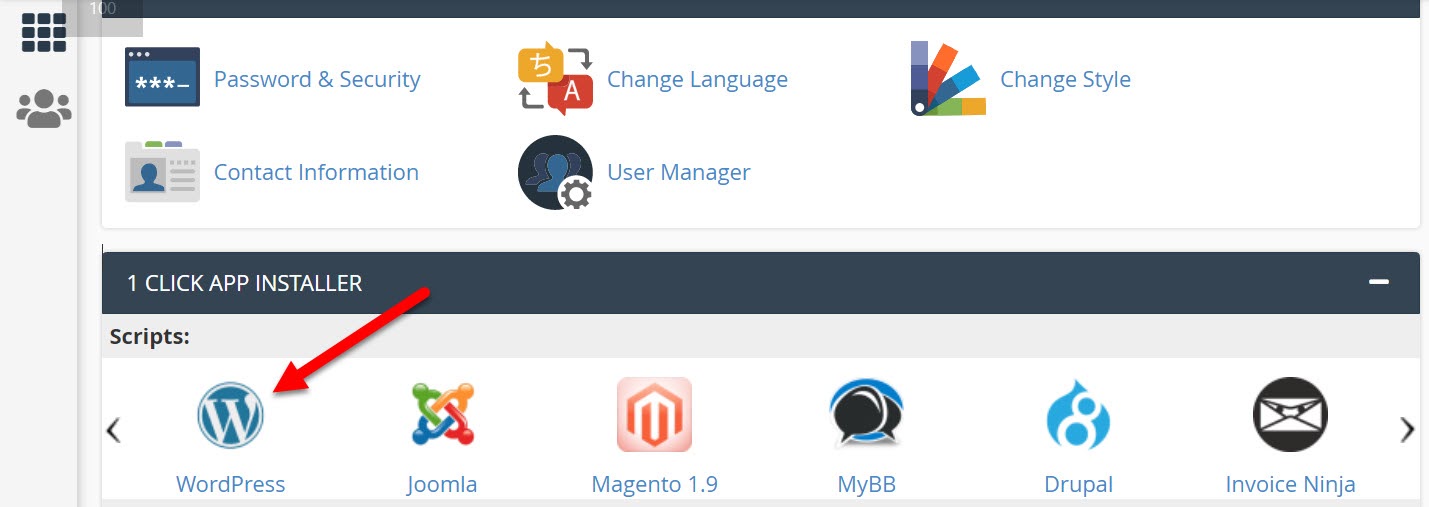
You’ll find all the WordPress websites along with their versions easily. It also helps to update your WordPress to the latest version, creates backups, and restores it.

7. cPanel Version.php
Some hosting companies don't grant access to WordPress 1-Click Installer in order to get more clients for their managed-WordPress-hosting plans.In that case, you can see the WordPress version from File Manager in Cpanel.

Locate the public_html folder where the first website is installed when you sign up for a new hosting plan.
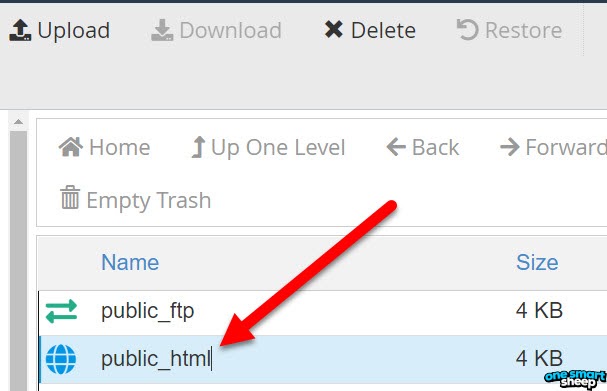
Next, click the wp-includes folder.
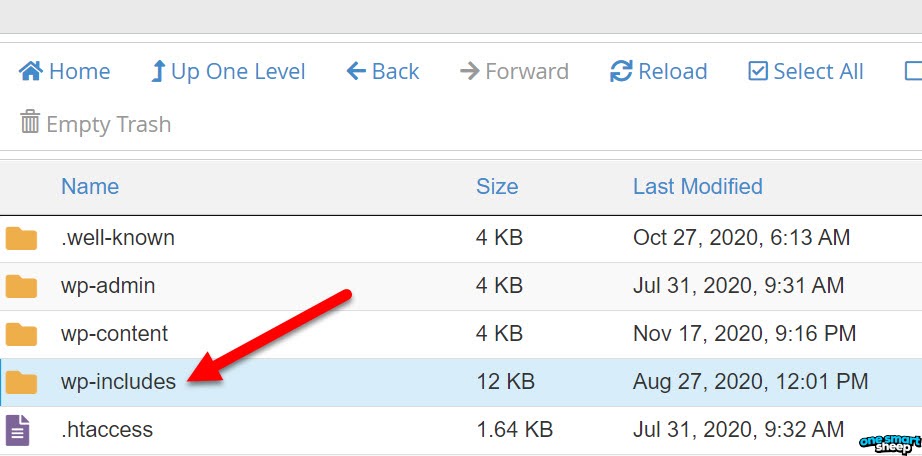
Find the version.php with the help of a find feature. Press Ctrl+F in Windows and Control+F in Mac.

Right-click on version.php and click Edit.
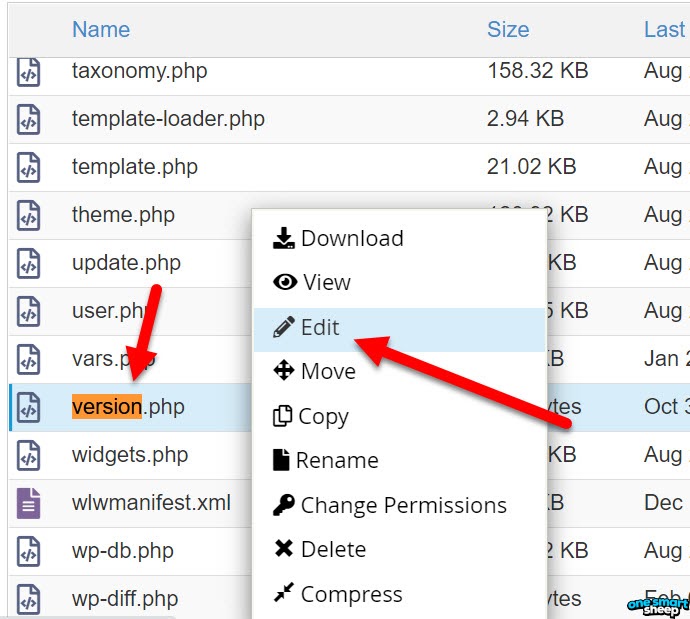
Once the file is opened, you can clearly see the version of WordPress.
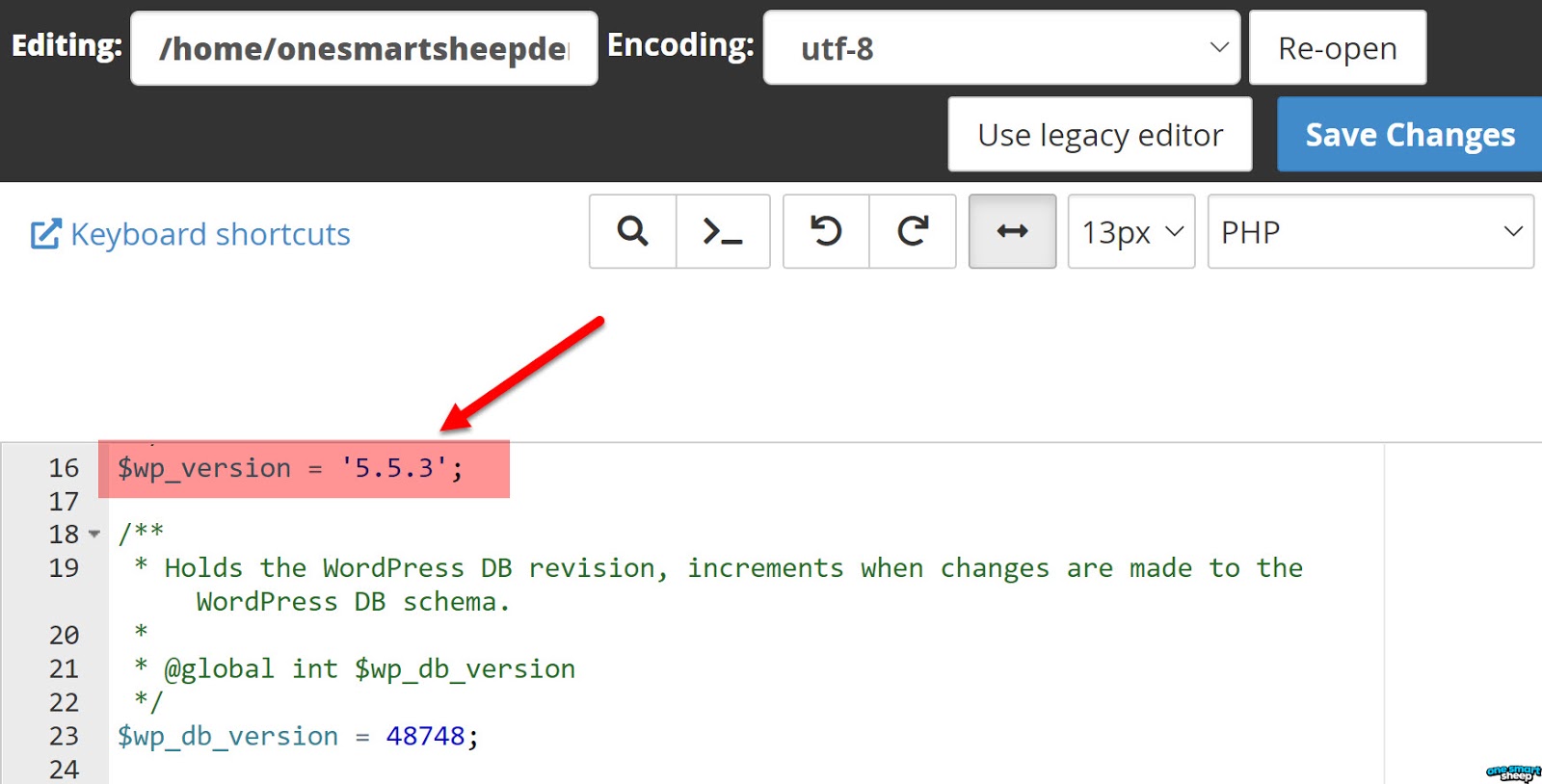
8. FTP Version.php
If you’re using cloud-based hosting like Digital Ocean, Vultr, and Lionade, you will not get cPanel with it—cPanel is pretty expensive. It's another direct and reliable way to find WordPress version of website, especially for developers or on cloud-based hosting.
But don’t worry, you can easily access your WordPress with the help of FTP. Make sure you have installed the client version of FileZilla for your operating system.

Once installed, open it. Type the username, password, and host. FTP details are sent in your email when you create an account.
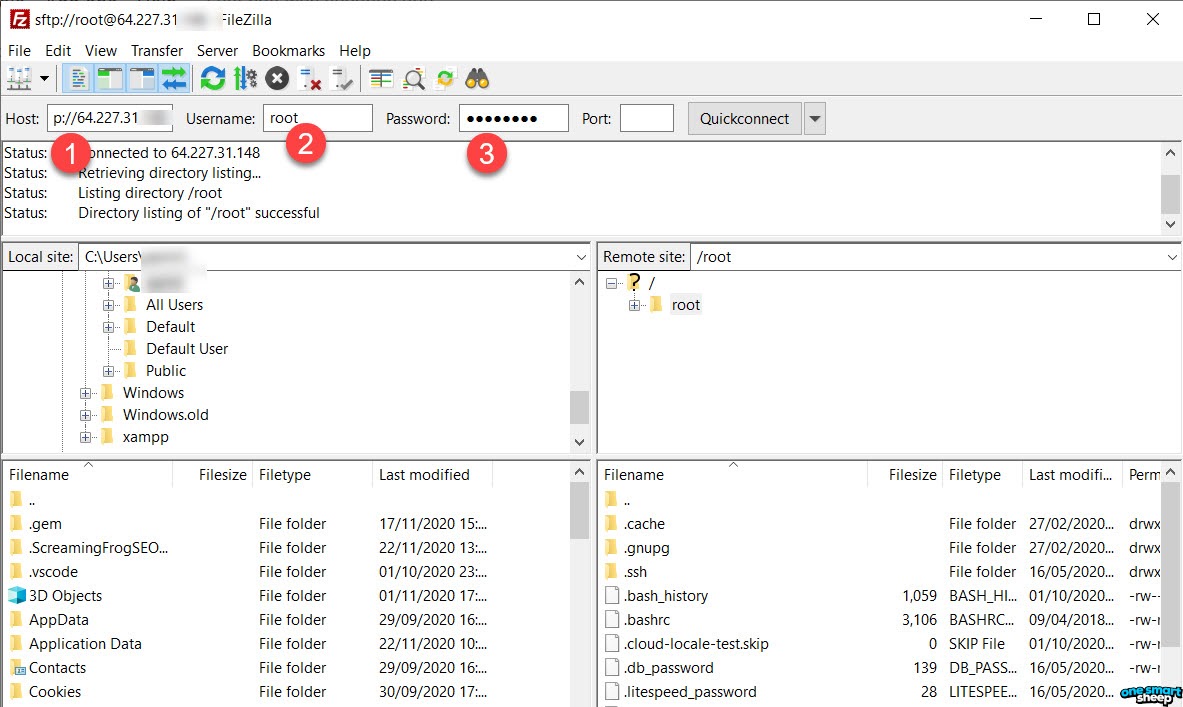
When you directly connect it, you won’t find anything. That’s why you need to put /var/www/html in the Remote site.
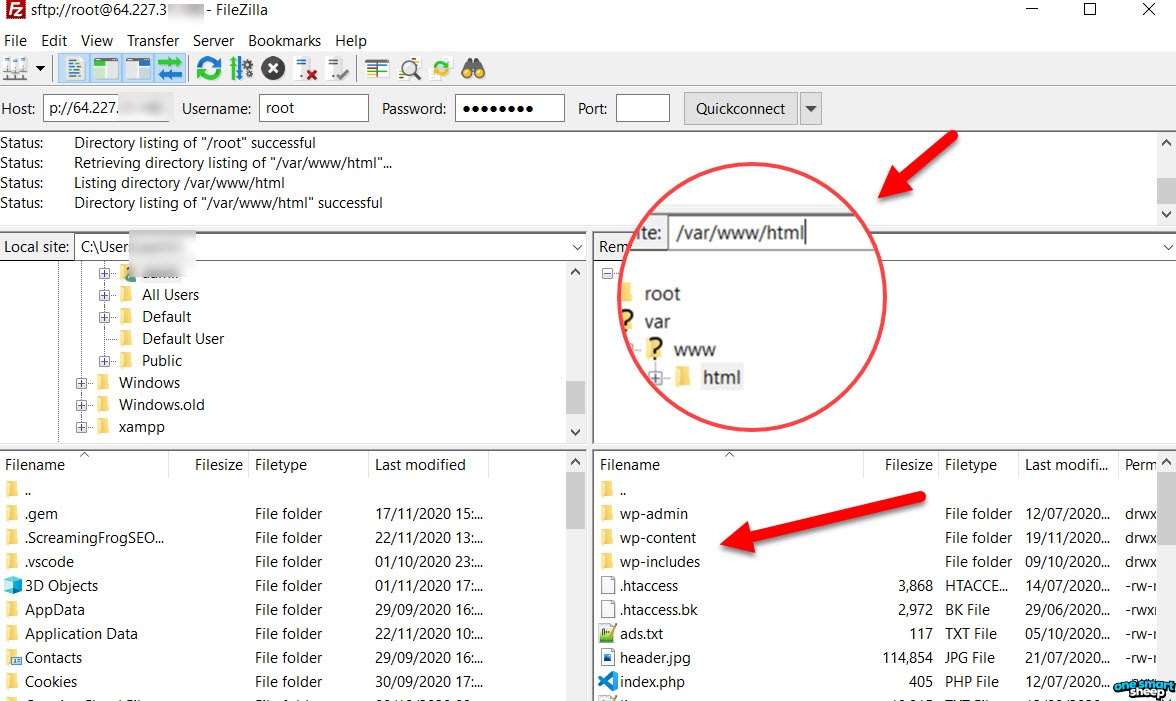
As soon as you type, you’ll see all the WordPress files immediately. Now go to wp-includes and find out the version.php.
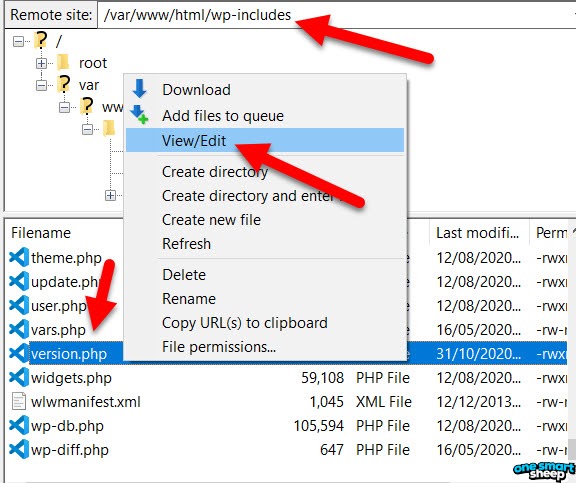
Click View/Edit; if any code editor is installed and made it default editor in FileZilla, it will show you like this.
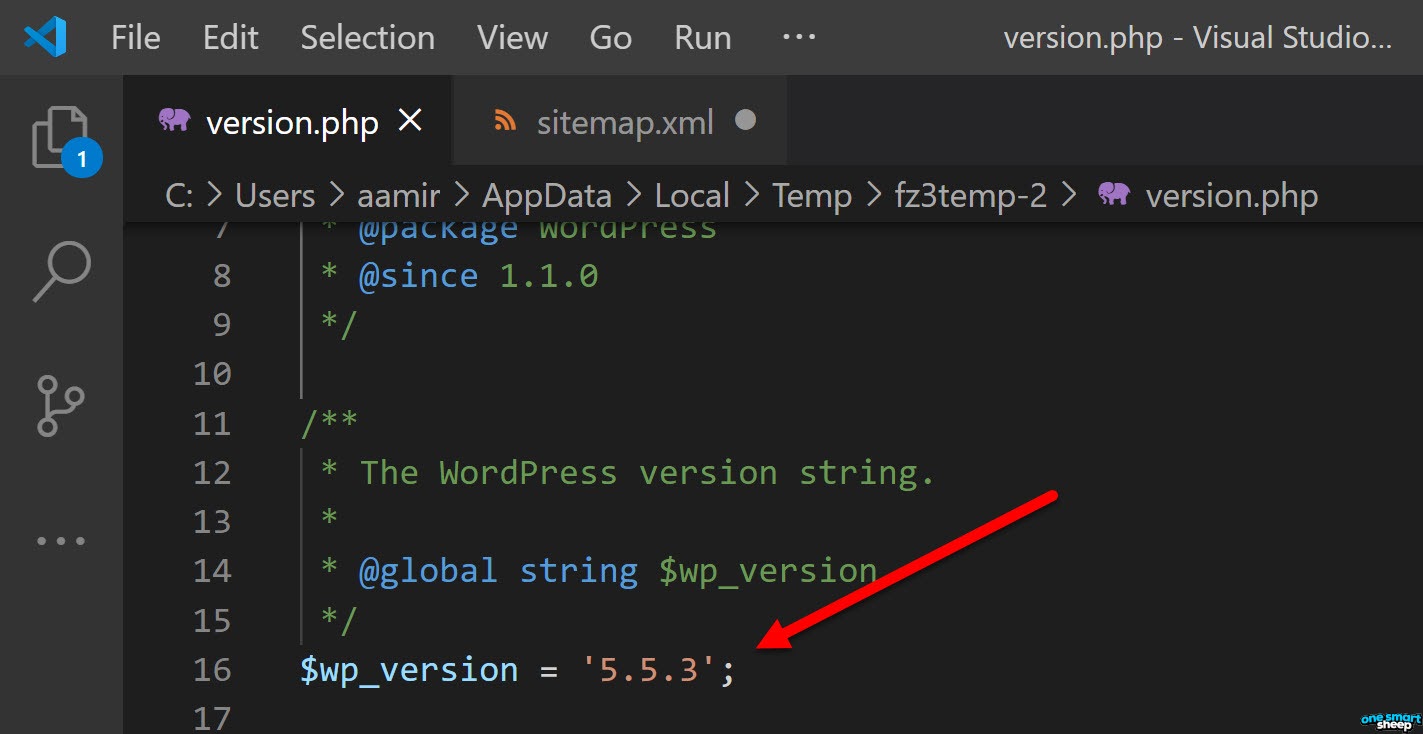
9. Way: About
When you bring your cursor over the WordPress icon, found at the top of the left corner, you’ll see the following options:
- About WordPress
- WordPress.org
- Documentation
- Support
- Feedback
Click About WordPress.
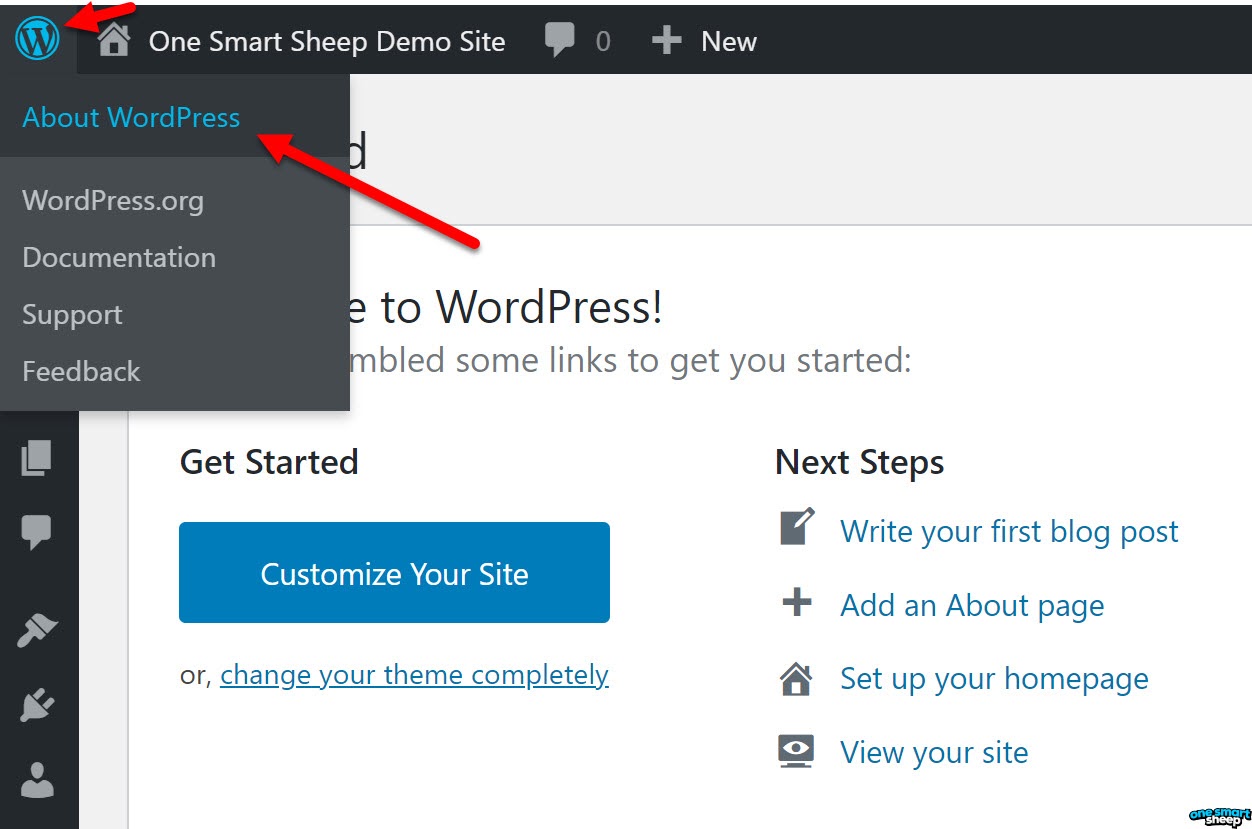
A big text will show you the version you’re using.
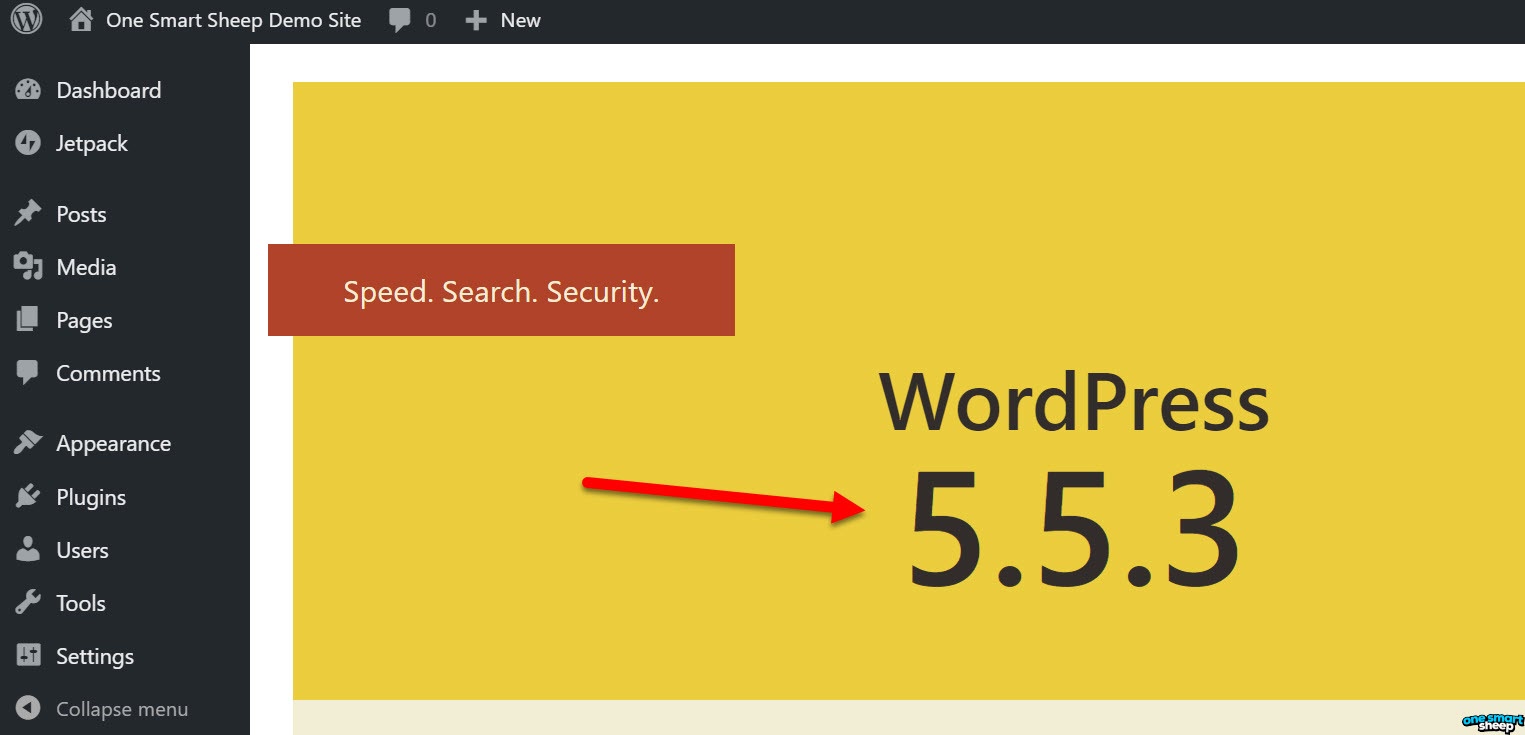
10. Sucuri Checker
It doesn’t only show the version but also scans for threats. This online tool is widely used to find WordPress version of website, especially when other methods are blocked.
Go to Sucuri SiteCheck and type the website address, and hit enter.
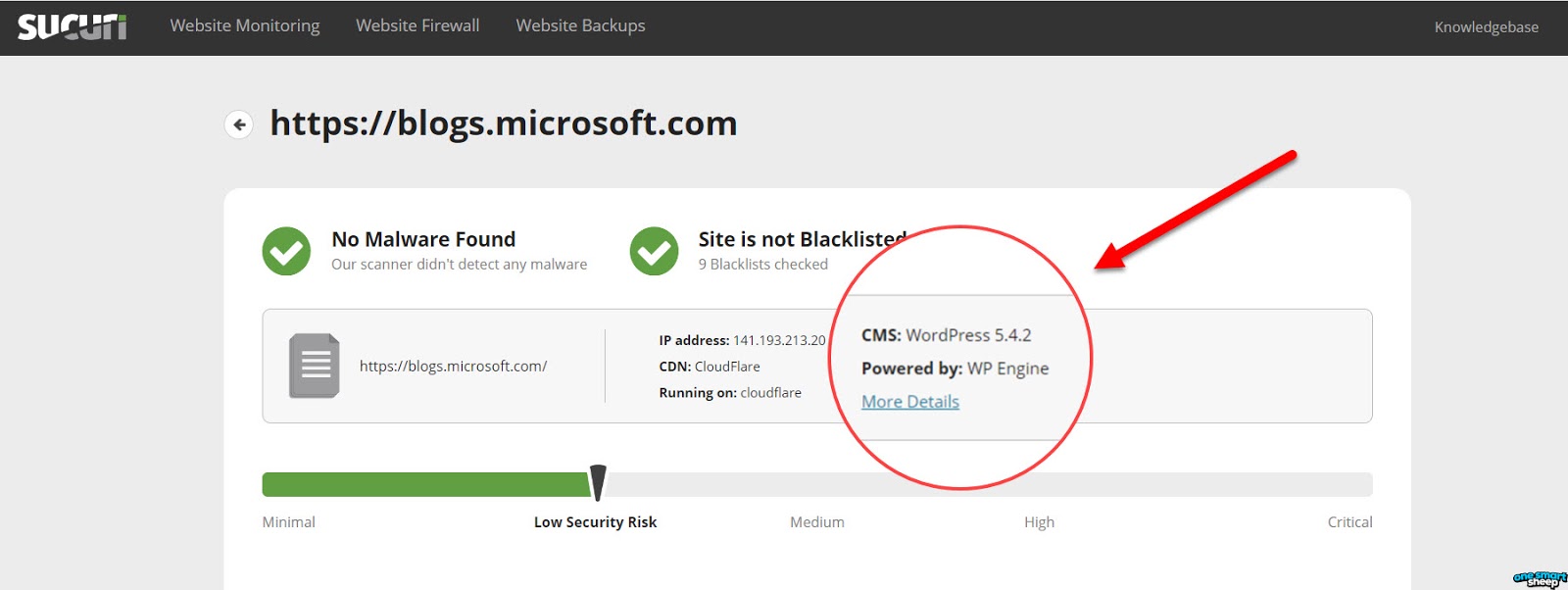
It doesn’t only show the WordPress version being used but also scans your entire website for suspected and malicious files.
11. Check WordPress Version Using WP CLI
The WP-CLI, or WordPress Command Line Interface, serves as a powerful tool for developers, enabling them to run commands on their WordPress website from afar, akin to using a computer's command prompt.
This tool allows operation directly from the command line, bypassing the need for a web browser. While setting up WP-CLI might seem daunting, particularly with its limited Windows support, certain hosting services, such as OSS, offer it pre-installed on their servers.
To begin, establish a connection to your hosting service via SSH (Secure Shell), a secure protocol for executing commands remotely on your site. For a comprehensive tutorial on initiating with SSH, consider looking up detailed guides.
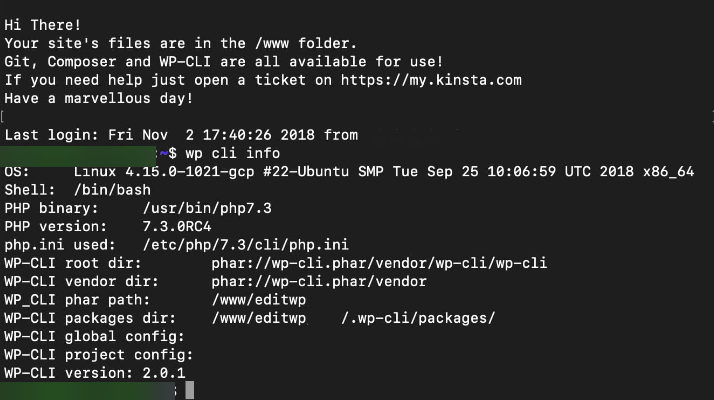
Once SSH access is secured, enter the “cd html” command to move to the correct directory. Following this, executing “wp core version” will reveal your WordPress version in the command line output.
It’s important to note that this approach may not be suitable for beginners due to its complexity. However, it becomes a valuable alternative when standard methods like FTP access, admin login, or frontend file viewing are unavailable, offering a reliable fallback for identifying your WordPress version.
Why Should You Hide Your WordPress Version?
Did you know the most commonly hacked CMS in the world is WordPress? It's a universal phenomenon that anything that has the largest market share in the industry faces the most hacking issues due to its popularity. According to Statista, Android is the most vulnerable operating system globally, followed by Linux, Mac, and Windows 10.

The same is the case with WordPress that accounts for 90% of the hacking attempts being the largest market share in the Content Management System (CMS). Hackers master the skills for specific platform to target most websites.

Did you know what the major reasons behind WordPress vulnerabilities are? The plugins, brute force, core, theme, and hosting.
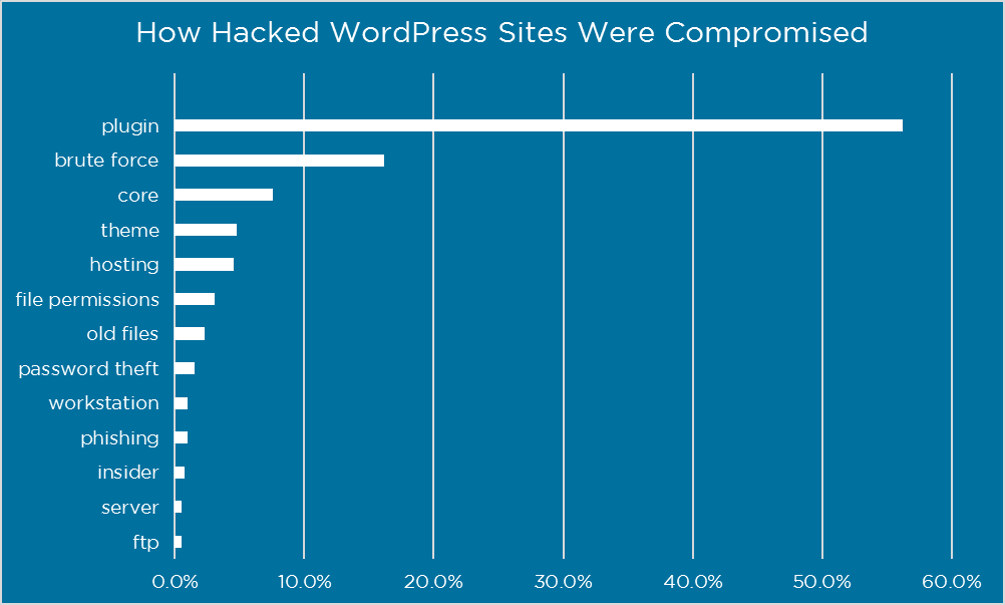
The core of WordPress is the third most common reason for WordPress-compromised websites. Hackers find outdated websites with the help of source code search engines; for example, PublicWWW is used for finding specific code from the source code of websites on the internet.
Additionally, plugins and themes can expose versions if not secured. That’s why many experts recommend steps to find WordPress version of website and immediately update or hide it for safety
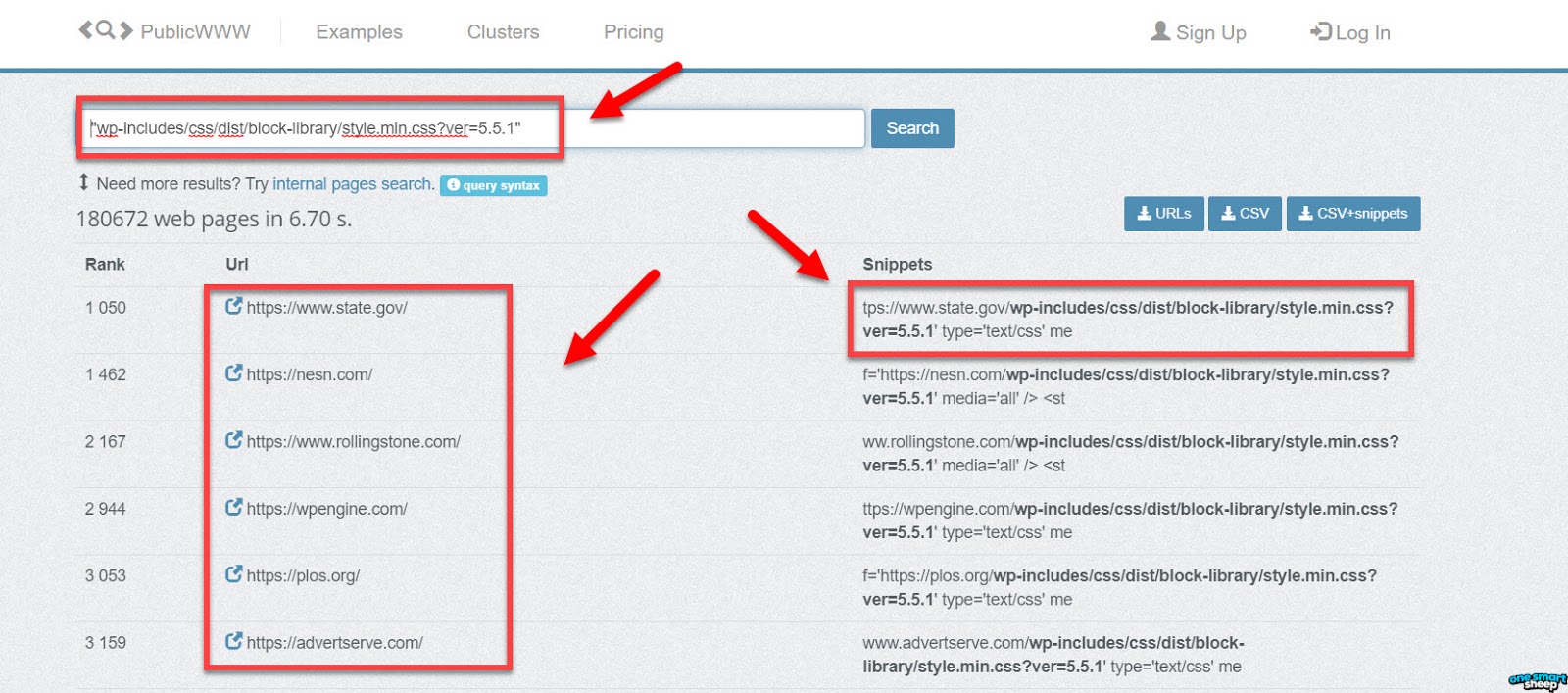
Once old websites are found, hackers try to find vulnerabilities associated with the WordPress version.
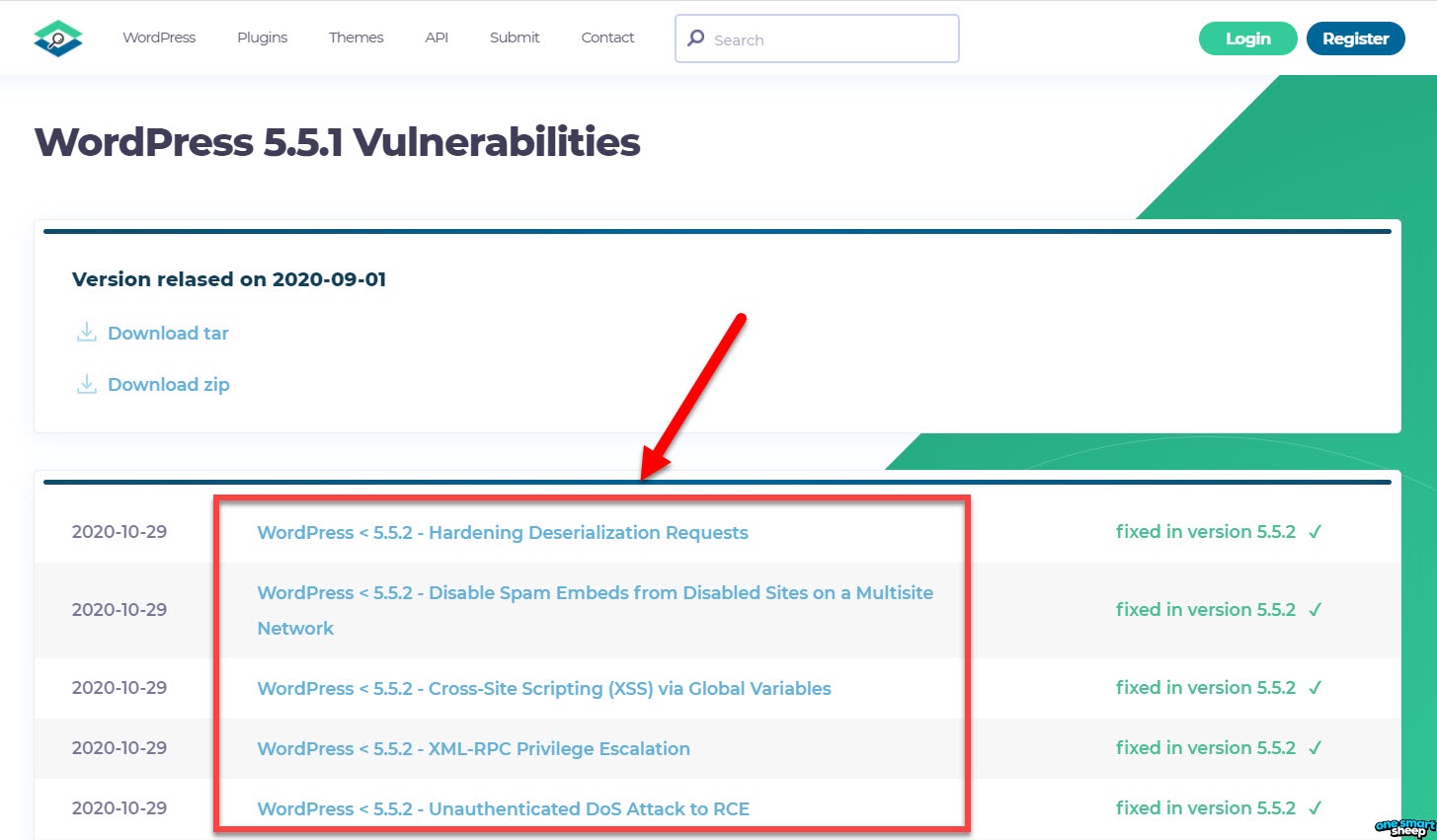
Additionally, hackers easily find the documentation for hacking specific kinds of vulnerabilities on the internet. Besides, hackers find the version of a plugin and its vulnerabilities in order to hack your website. It’s highly recommended to keep your website updated.
The latest WordPress version makes it extremely easy to auto-update your plugins and themes on auto-pilot. It will update all the plugins and themes on your website, hackers will find it hard to compromise your website.
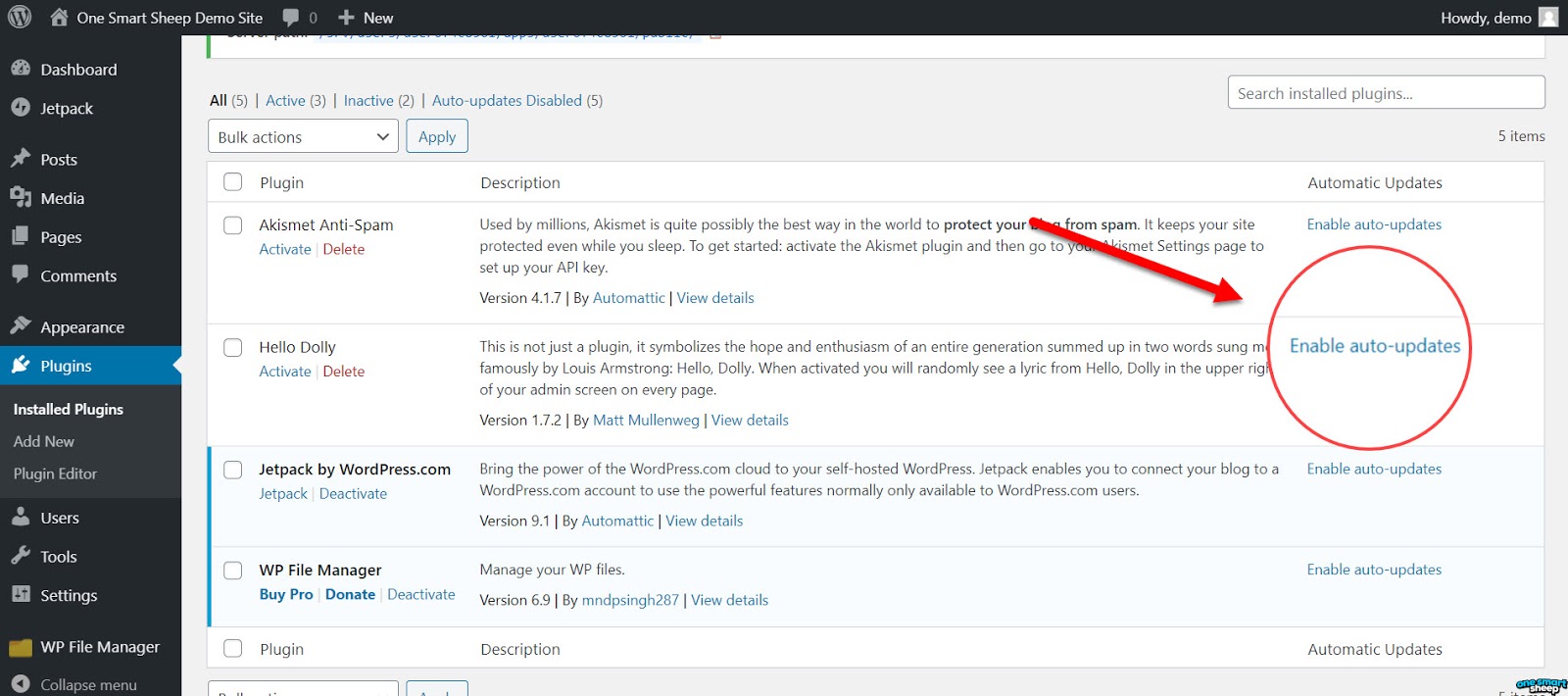
How to Hide WordPress Version
It has proven hiding the WordPress version is more important than anything else; otherwise, your website has a greater chance of being hacked. There are two ways to hide the WordPress version: without a plugin and with a plugin.
1. Hide WordPress Version Without a Plugin
Experienced WordPress users understand the importance of running a website without a plugin. Fewer plugins make maintenance easy, less vulnerable to hacking, and loads much faster.
But the problem is that it’s really time-consuming. If you update the WordPress version, the settings might get removed and need to be implemented manually again. Follow the below steps to hide WordPress manually:
Go to Appearance>Theme Editor>Theme Functions.
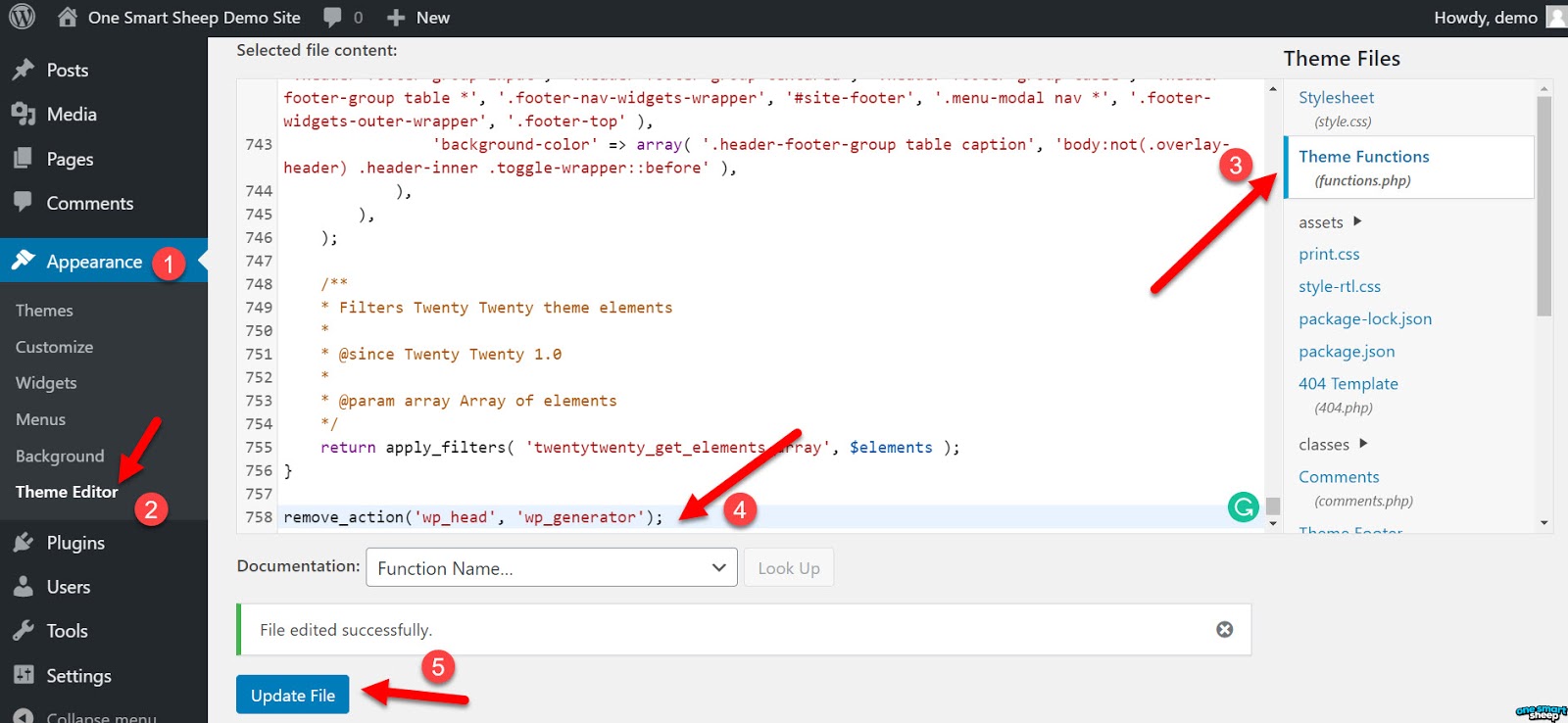
And paste the below line at the bottom of the function.php. The above line removes the WordPress from here:

And don’t forget to add these lines as well:

You’ll not find the Wordpress version in RSS.
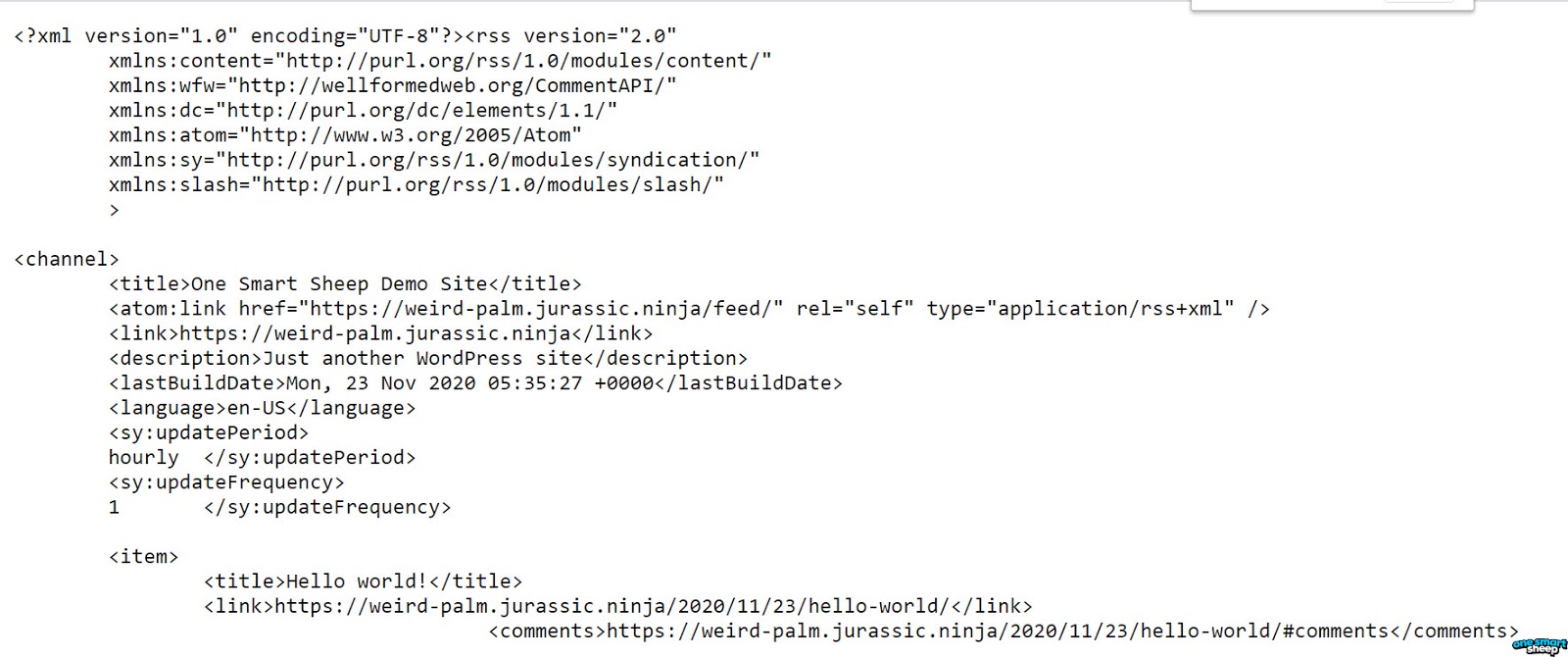
The major issue with the above method is that they don’t hide the WordPress versions from scripts and CSS.I have found a solution for them, as well.Please copy the below code and paste it into function.php.[su_note]// Pick out the version number from scripts and stylesfunction remove_version_from_style_js( $src ) {if ( strpos( $src, 'ver=' . get_bloginfo( 'version' ) ) )$src = remove_query_arg( 'ver', $src );return $src;}add_filter( 'style_loader_src', 'remove_version_from_style_js');add_filter( 'script_loader_src', 'remove_version_from_style_js');[/su_note]

As you can see, the WordPress version has been removed successfully.

2. Hide WordPress Version With a Plugin
Some people are lazy; they want to use a plugin to avoid any potential loss. You can find plenty of WordPress plugins to hide the WordPress version.
I personally prefer to use a premium version due to the regular updates, and real hard work is put into making it.If you are low on budget, you can use the free WordPress plugin, WP Hide & Security Enhancer by Nsp Code.

It perfectly hides your WordPress version, not only from the source code but also from the online WordPress detector.
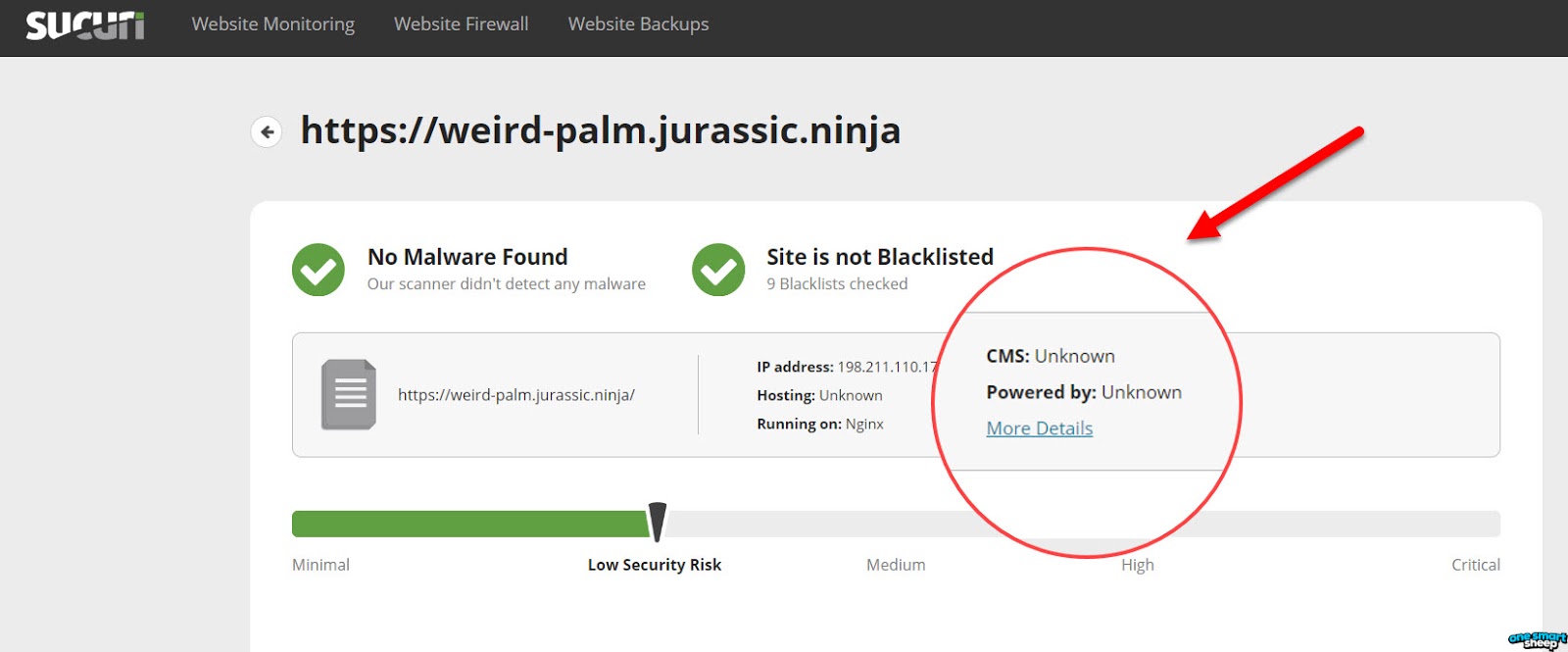
How to Check WordPress Version Without Login?
As a website owner, you need to keep your website secure and up-to-date. Updating WordPress to the latest version can help protect your website from security vulnerabilities and improve its performance. However, before updating, you need to know which version of WordPress your website is currently running on. In this article, we'll show you how to check the WordPress version without login.
1. Checking WordPress Version from the Website's Source Code
The easiest way to check the WordPress version is by viewing the website's source code. Here's how you can do it:
- Open your website in a browser.
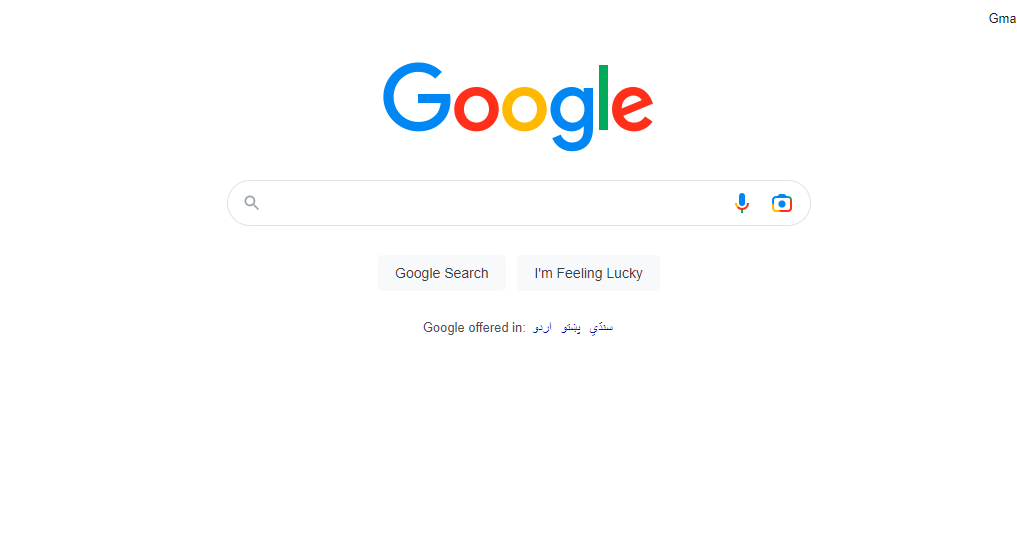
- Right-click anywhere on the page and select "View Page Source" from the context menu.

- This will open the page's source code in a new window.
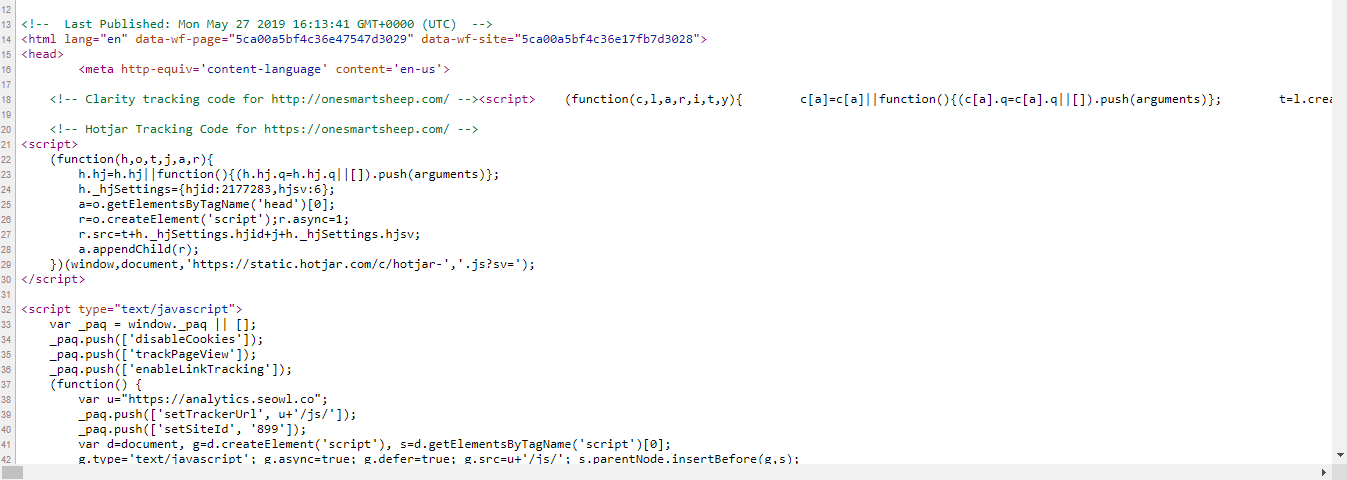
- Press "Ctrl + F" to open the search box, and type "wp-".
- The search result will show a link to the WordPress version your website is using. For example, if you see "wp-includes/js/jquery/jquery.js?ver=3.6.0", it means your website is using WordPress version 3.6.0.
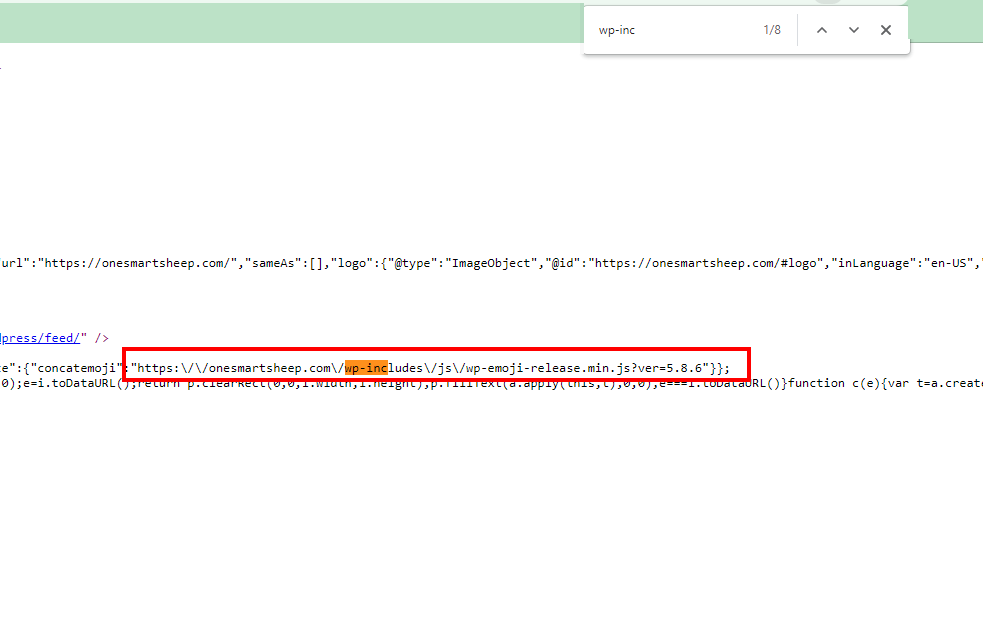
2. Checking WordPress Version from the Readme.html File
WordPress comes with a "readme.html" file that contains information about the WordPress version and other important details. Here's how you can check the WordPress version from the "readme.html" file:
The WordPress version number is also included in the readme.html file, which can be accessed by entering the following URL into your browser:
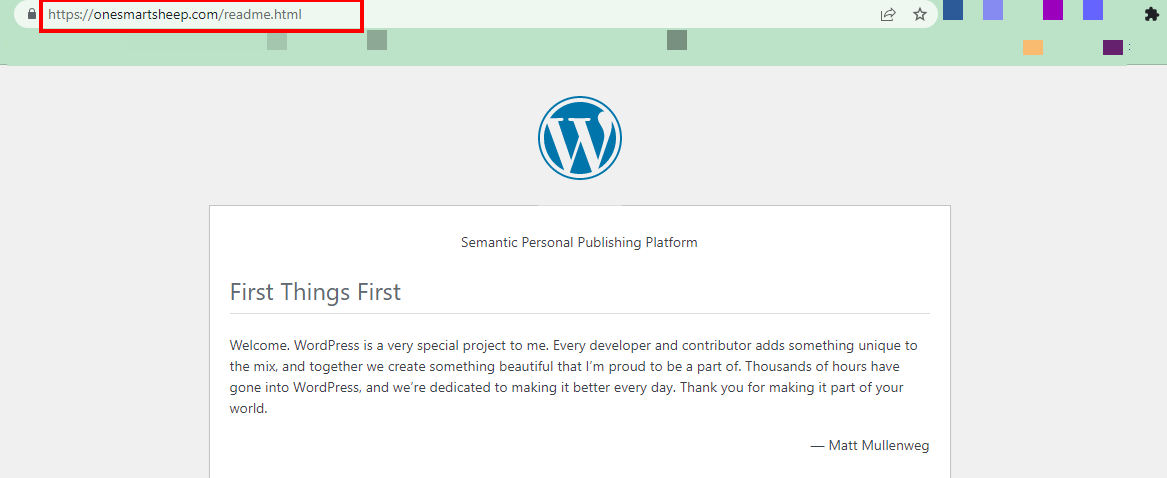
http://example.com/readme.htmlReplace "example.com" with your website's domain name.
3. Checking WordPress Version Using Online Tools
Several online tools can help you check your WordPress version. These tools scan your website and provide you with detailed information about the WordPress version, theme, and plugins you're using. Here are some of the best online tools you can use:
- WPScan
- IsItWP
- BuiltWith
- Wappalyzer
- Checking WordPress Version Using Plugins
You can also check your WordPress version using plugins. Some plugins show the WordPress version on the dashboard, while others provide detailed information about the WordPress version, theme, and plugins. Here are some of the best plugins you can use:
- What The File
- Debug Bar
- Site Health
- Query Monitor
Wrapping Up
It doesn’t matter whether you own the WordPress site or not; there is always a way to find WordPress version of website. Hackers and developers alike use the same tools and methods.
Hackers use the same methods to find vulnerabilities on any website; that's why you should hide your WordPress version.
Moreover, hackers have tools that can find millions of websites using the version and can easily hack them with a vulnerability found in that WordPress version of the theme, plugin, or core.
The fastest way to find the WordPress version is to put your website into a WordPress detector like Sucuri SiteCheck. Other better ways are source code and RSS feed methods. Let us know if you know of any other method listed above; we'll mention you in our article :)
FAQs
How do I check WordPress version?
To check your WordPress version, log in to your WordPress dashboard and navigate to the "At a Glance" section on the main dashboard page. The WordPress version will be displayed there. Alternatively, you can click on "Updates" from the dashboard menu to see the current version and available updates.
How to check WordPress version from command line?
To check your WordPress version from the command line, you can use the wp cli command. First, navigate to your WordPress directory using the terminal or command prompt. Then, run the command: wp core version. This will display the current version of your WordPress installation.
Which WordPress do I have?
To determine which WordPress version you have, log in to your WordPress admin dashboard. Look for the "At a Glance" widget on the dashboard homepage, which will display your current WordPress version. You can also go to "Updates" from the left-hand menu to see the version number and any available updates.
How do I find my WordPress PHP version?
To find the PHP version your WordPress site is running on, you can use one of the following methods:
- Install a plugin like "Display PHP Version" which will show the PHP version in the WordPress admin dashboard.
- Create a plain text file named "phpinfo.php" in your WordPress root directory with the following code: <?php phpinfo(); ?>. Then, access the file through your browser (e.g., www.yoursite.com/phpinfo.php). The PHP version will be displayed on the resulting page.
- Check with your hosting provider or hosting control panel, as they often provide information about the PHP version.
How do I check my PHP version?
To check your PHP version, you can use the following methods:
- Create a file named "phpinfo.php" with the following code: <?php phpinfo(); ?>. Upload this file to your web server and access it through a browser. The resulting page will display your PHP version and other configuration details.
- Use the php -v command in the terminal or command prompt. Open the terminal, type php -v, and press Enter. The PHP version will be displayed in the output.
- If you have access to your website's control panel (e.g., cPanel or Plesk), look for a section that displays the PHP version.
- Contact your hosting provider, as they can provide you with information about the PHP version installed on your server.
















.svg)
.svg)
.svg)

